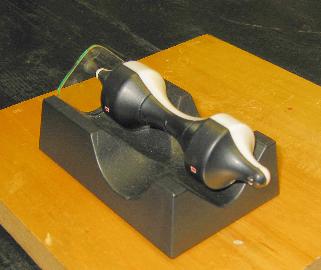
You are probably most familiar with magnets as providing a way to stick things to the refrigerator and the file cabinet. Iron and steel are so ubiquitous that we get the impression that magnets stick to everything, whereas in reality they are attracted to only one common material -- iron (and its alloys, such as steel).
Magnets also have a more important role than this. We will find out in the next section (on electromagnetism) that electrical currents can give rise to a magnetic field, so that we can exert a force that is fairly large, acts over a visible distance, and which we can turn on and off at will. The result is that overwhelmingly the way we convert electrical energy into mechanical energy (that is, motion) is by use of magnetic effects.
Another way that we use magnets is in information storage. Your credit cards, floppy disks, and the hard disk in your computer remember the information we entrust to them in the form of a pattern of magnetization -- that is, many little regions that are magnets pointing one way or another. That's why we should avoid getting these things near a magnet: altering the pattern will destroy the information.
Although most iron and steel objects don't seem to be magnets -- they don't spontaneously collect paper clips -- this is only because they consist of many small regions that are magnetized in random directions. An external magnet induces order into these, which may persist after the magnet has been removed. Materials differ in the extent to which this happens; the memory effect is enhanced if the magnetic particles are in the form of needles that are all aligned the same way.
The earth itself is a magnet. In addition to making compasses work, this also has effect on the charged particles that bombard the earth from outer space. The magnetic field diverts the particles, giving us some protection from them; it tends to divert them to the magnetic poles, where they give rise to the phenomenon of the aurora borealis (northern lights).
Although in certain combinations magnets repel each other, it is hard to use this to levitate a magnet without it touching anything. There always is a way for one of the magnets to turn so that they now attract. There are a few ways to get around this problem:
